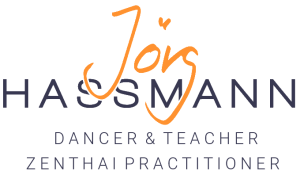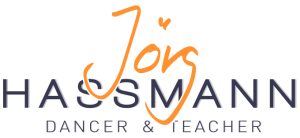What is it that makes me feel ‘I am dancing’? And is that all I want from the dance?
There are these moments in my practice where I suddenly think and feel ‘Now I am dancing!’ What makes me feel that? And what am I doing, when I don’t feel like saying that?
A participant of our CI training programme asked this question. And I noticed that I have given conflicting answers in writing and teaching about it.
‘I am dancing!’ Is it directly connected to the flow, where things happen almost by itself and they feel just right? Where I am truly invested in what I am doing, with an amazing awareness of what is happening in me and out side of myself, where every thing seems to happen in a miraculously smooth and partly surprising way, with physical delight and a mental and emotional aliveness that makes my heart open up, where it is so easy to embrace the unknown, because I feel on a deep level safe. Is that what I mean with ‘Now I am dancing!’?
What about all the less blissful phases, where it feels like work, where I am in an open negotiation process with me and my environment, struggling for solutions in awkward situations? Are they only the necessary effort to harvest the moments of real dance? Or are they an integral part of my experience of the dance?
I want to use this writing to become as honest as I can.
I have these clear moments, when I feel ‘now I am dancing!’ – as if there was a switch that finally flicked. What is it? It is not diving directly into the super flow with this amazing broadened awareness, where I am fully present on all possible levels. I think it is more a mental shift, where something in me surrenders to the language of movement, where the talking and interpreting voices in my head are more quiet. Something is becoming simple in these moments. I move, I sense myself in the movements, I am ok with doing what I am doing. And usually there is a sense of easeful curiosity and commitment that go along with it. It is nothing big or super special.
The switch is connected to being where I am and being ok with that, instead of being busy with what happened before or with what should and what shouldn’t happen next. The pure doing of the movements sinks down or lifts up to a different level of ‘being in my movements’.
Is it necessary to feel that I am dancing in order to be able to claim ‘I am dancing’?
I am struggling with the answer because it feels so important to me to accept and value the phases of not being in the state where I’d like to be. These moments of being lost, which Nany Starck Smith calls the ‘gap’ in her underscore vocabulary. Or the experience of irritations, where things don’t fit like I expect them to. They are an integral part of my idea of dancing. I want to find some kind of peace with these moments. There is also something very alive happening. Dealing with myself and the surrounding, when I don’t find the clarity that I am longing for. I clearly don’t want to escape from these situations. How honest can I be when I am not present? How can I negotiate with myself and the impact from others and the space, when I am not blissfully present? It is the ‘working mode’, where a big part of my dance is happening. Using the tools that I have in order to notice what I am doing and to change what I am doing. The ‘not dancing state’ seems to be an important part of my dancing self.
It might be a reason why I like the idea of ‘practice’ so much. There is something very non-judgemental in it, something that embraces very different layers of my dance.
How about: The moments when I don’t feel ‘I am dancing’ are part of my dance. That means I dance in moments, which don’t feel like dancing.
Is there also something where I can clearly say that I am not dancing, while being in a dance frame?
I wouldn’t like the idea that everything is dancing. Giving up is not dancing. Not caring about what I do is definitely not dancing. Falling into a purely social or a completely private state is not dancing. I guess it is the intention of ‘I do what I can to dance’ that counts the most.

